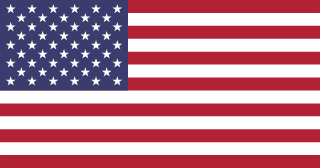Lessons in African Art – 6 Quick Buying Tips
The Rise in Popularity of African Art - African art is hot these days. It is popular not only because it looks intriguing, but also because of the traditions, culture, and mythology associated with each piece. This is why you are seeing African artwork more frequently in people’s homes and offices. There has been a quite a surge in the appreciation of African artists and craftspeople!

African Art is More Accessible Than Ever - Part of the reason African art has "taken off" is that it is more accessible than ever. The Internet has made it possible for anyone to view and purchase pieces online. African art is no longer confined to art collector’s private collections and galleries. If you are new to African art, understanding core characteristics is important and contributes to appreciating the significance of a particular piece. You need to know what to look for and what you are looking at, in order to determine if the piece is not only visually appealing to you, but also has the meaning or theme you want to incorporate into your decor.
Core Characteristics of African Art - The following tips will provide you with a brief lesson in African art that you can apply when buying online:
- Diversity: African art is diverse—in fact, more diverse than most realize. This makes it very difficult to generalize. There are more than 1,000 cultural groups living on the continent. Each of the 5 main regions has developed its own cultural and artistic identity. Each region and/or cultural group has also been influenced by other cultures, depending on where they are located and the influences brought to the area by other cultural and ethnic groups.
- Traditional Wood Carvings: Traditional wood carvings are the most widely recognized and popular forms of African art, with masks and sculpture being the two most symbolic forms. However, wood décor and furniture have also become popular. Many of the traditional pieces are carved using African Blackwood (also known as Mpingo) and ebony.
- African Masks: There are three basic types of African masks that you will encounter – head dresses, face masks and helmet-style masks. These masks are worn in many different religious and ritualistic ceremonies, and each one has a specific meaning and symbolism based on appearance, design and symbols used.
- African Sculptures: One of the primary things you will notice about African sculpture is the unique and often abstract design elements. Most are vertical and tubular in shape, often abstractly representing human-like figures and specific themes centering on life and spirituality.
- Intricate Details: Every nuance is there for a reason. Carvings with smooth surfaces represent beauty and health; rough surfaces represent deformity or moral flaws. Artists pride themselves on their emphasis of high quality craftsmanship and materials.
- Subjects and Themes: African art has often been created to be used as part of a ceremony or ritual, rather than specifically as a decor item or embellishment. This approach significantly changes how African art is constructed. Common themes and symbolism include:
- Abstract human and animal images
- A man with a weapon
- Women with their children
- An outsider or stranger
- A religious or mythical spirit
- Luminosity and smooth surface designs
- Themes of wisdom, protection, family, youthfulness, self-composure
If you are interested in African art and crafts, delve a little deeper and look for the message, the spirituality and often the story that each piece conveys. This will heighten your enjoyment of each and every piece you purchase. Please always feel free to contact us if you have a question. We may not always know the answer, but we often can refer you to someone who does..





